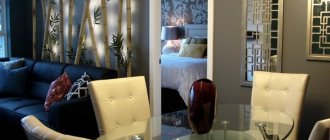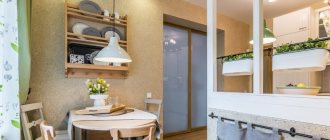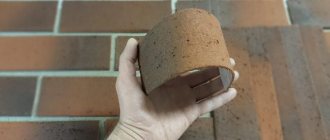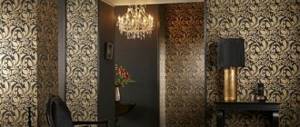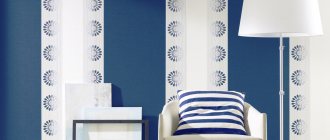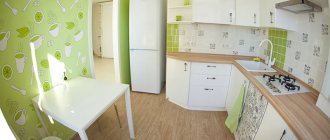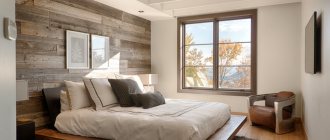Once upon a time, stucco molding decorating the interior decoration of walls or ceilings was a sign of luxury and aristocracy. However, due to the labor-intensive process of implementation, the fashion for this decor gradually went away, and instead of stucco, people began to give preference to easy-to-apply wallpapers and coatings. However, in 1877 the world learned about new possibilities in wall decoration. It was then that Frederick Walt created linkrusta wallpaper, for the production of which a layer of plastic with a convex engraving is applied to a thin paper or fabric base, which in appearance is very reminiscent of that very stucco molding.
Today we will tell you what linkrust-type wallpaper is, how they are mounted and, most importantly, how you can use them to decorate your interior.
linkrust wallpaper
Description and features of linkrust wallpaper
Linkrust wallpaper was invented by the father of linoleum, British industrialist Fred Walton. He didn’t think much about the name, he simply made up the word lincrusta from two Latin words linum and crusta meaning “linen” and “relief”, respectively.
In terms of its structure, linkrust for walls consists of two layers of paper with a plastic viscous material between them. Initially, the inner layer was created from a mixture of linseed oil, wax, wood flour and chalk. Modern manufacturers of linkcrust finishing focus on high-tech materials such as alkyd resins, resins and soft plastics made from a gel created on the basis of linseed oil.
Externally, linkrust for walls is very similar to stucco panels. Unlike conventional rolled wallpaper, this wall covering is supplied in the form of stacks of sheets sealed in cardboard boxes. Linkrust wallpaper:
- have a variety of pattern textures;
- can be pre-painted in a specific color;
- White batches are produced separately for subsequent coloring.
Linkrust will not fit into every interior - it is a very situational wall covering. Linkrust wallpaper will perfectly support the atmosphere of such interior design trends as baroque, classic, neoclassical, Victorian, and modern. With some degree of convention, linkcrust for walls will find its way into colonial-style decoration. In high-tech, country and fashionable loft environments, linkrust wallpaper will disrupt the overall visual tone, turning a noble idea into cheap kitsch.
Types of linkrust wallpapers
The natural components used in the manufacture of rolls ultimately represent 2 types of linkrust wallpaper:
- relief embossing;
- smooth washable surface.
There are cheaper linkrusta wallpapers made with the addition of synthetic resins and wood chips.
The photo shows linkrusta wallpaper in the bedroom interior. The relief pattern and the right color give the room royal luxury.
In the corridor, the linkrust wallpaper is made in two contrasting colors, which gives a special charm to the room. Where the main background is a dark color. Achieving a light tone in a drawing is quite simple. It is enough to remove the top layer of paint from the convex areas and you get a masterpiece.
The aristocratic decor in the photo of linkrusta wallpaper in the living room interior is given by silver or gold paint on the convex places of the embossed wallpaper.
Linkrust wallpaper in one color looks original.
Delicate interweaving of blue and silver tones.
Decorating elements with linkrust wallpaper.
Decorating the frieze of the room with wallpaper.
Linkrust production technology
The manufacturing scheme for linkrust wallpaper has not undergone any significant changes over the past hundred years. As before, to obtain linkrust wall covering, the manufacturer:
- seals a plastic layer between two sheets of thick paper;
- squeezes out the required relief with a roller or on a machine;
- cuts the resulting panels into separate sheets or rolls;
- dries the resulting products;
- packages the finished linkrust and delivers it to retail outlets.
Despite the fact that modern production in the production of linkrust wallpaper willingly uses modern materials such as alkyd resins and plastics, if desired, you can still find linkrust made using classical technology using linseed oil, chalk, wax and wood flour. Authentic linkrust will cost more, but it is not possible to identify much difference in the quality of the finished products.
Composition, properties and characteristics
Linkrust wallpaper is not the latest development. Their appearance dates back to 1877. The developer of this unusually attractive material was Frederick Walton, known as the inventor of the most popular coating today - linoleum.
Therefore, for the first time, linkrust appeared under the name linoleum for walls (Linoleum Muralis). Subsequently, the material was renamed Lincrusta wallpaper.
Structurally, the composition consists of three layers:
- A base made of fabric, non-woven or paper.
- A decorative gel layer called natural or natural plastic. Flaxseed oil is used to produce the gel. Most often, wax, rosin or chalk are added to flax.
- A layer of paint.
The composition has remained unchanged to this day. However, very often wallpaper for linkrust walls can be found with a synthetic composition. Such samples are usually cheaper than natural ones.
The production technology consists of several stages. To begin with, all components of the decorative layer are sifted and mixed. The result is a plastic mass, which serves as the basis for applying the relief.
We recommend: Hot stamping wallpaper for walls
The hardened gel layer is then glued to the base. The pattern is created using special rollers, after which the workpieces undergo a long drying stage, which takes about two months.
Drying removes excess moisture from the blanks, as a result of which the finished wallpaper acquires excellent strength and density.
Linkrust, the price of which ranges from 3,000 to 25,000 rubles. per roll, have a length of about 12 m. The width varies from 0.5 to 0.9 m. They correspond to GOST 5724-75.
Linkrust is applied in the same way as regular wallpaper. The only difficulty that can arise is that the linkcrust fabric has much more weight, so gluing it is somewhat more difficult. This is due to the volume of the patterns, more reminiscent of stucco.
Also, before you start gluing, the linkcrust should be soaked in hot water for a maximum of 10 minutes, and then left to dry for 10 hours. This is done to expand and obtain the desired shrinkage.
Lincrusta wallpapers are available in milky or white-beige shades, which requires further coloring, which will highlight the unusual pattern of the material.
Pros and cons of linkrust wallpaper
Among the disadvantages of linkrusta in interior decoration:
- high price (on average from 23,000 rubles per package);
- increased sensitivity to temperature changes;
- increased requirements for transportation, storage and installation.
There are many more advantages:
- excellent appearance reliably imitating hand-made stucco;
- variety of textures and shades;
- long service life;
- the ability to restore damaged areas;
- moisture resistance;
- environmental Safety.
Linkrust installation
Pasting linkcrust requires the performer to have certain skills and experience. Transportation and storage of linkrust have their own regulations. This material should be stored exclusively in a vertical position, otherwise there is a risk of damaging the pattern.
- Before gluing, the wall must be leveled and treated with an adhesive primer.
- Please note that the weight of a roll of linkrust can reach ten kilograms, so you may need a partner for successful work.
- The place where the linkcrust will be cut should be covered with newspapers or thick polyethylene.
- Make markings on the wall and the back of the roll in advance.
- Linkrust must be cut using a sharp knife. Movements must be clear and confident. Cutting is best done using a metal ruler. On cut sections, the location of the top edge and the serial number of the cut section should be indicated.
- Before applying the glue, the back side of the linkrust is generously moistened with warm water so that the material does not absorb moisture from the glue. After this, you need to fold two dampened cloths together and wait no more than twenty-five minutes.
- After removing excess moisture, special glue is evenly applied to the wallpaper.
- The first canvas of linkrusta is glued with an indentation from the corner. The wallpaper is smoothed to the wall using a soft rolling roller, and any excess glue that appears is removed with a sponge or a piece of rag.
- To seal the corners, cutting technology is used. In some cases, unevenly glued corners can be filled with oil putty.
The subtleties of installing linkrusta under normal conditions can be learned from the video.
How is Lincrusta wallpaper produced?
Linkrust is considered a material with high environmental friendliness, since only natural materials are used in production, just like 100 years ago. The base of this wallpaper is paper, but the relief layer is formed from very finely ground wood flour mixed with chalk, wax, rosin and some other natural ingredients. The pre-prepared mixture is applied to a paper base, and then a relief is created using stamp rollers. Next, the canvases are cut to standard sizes and dried for two months.
An interesting feature of linkrust is that over the years it only gets stronger as the natural components harden, and this is an amazing and exceptional phenomenon in the world of wallpaper. True, in the first stages after gluing they are a little fragile, which is why it is recommended to varnish them. But now the linkcrust that was glued in the palaces about a century ago still holds up and looks beautiful. So with normal care this is a fairly durable coating.
It is worth mentioning that not all manufacturers adhere to the original technique for making linkrust, so there are also materials that contain synthetic resins, unnatural plasticizers, etc., which, although they make the product cheaper, make it less environmentally friendly and durable.
Linkrust, made from natural materials, has a beige color and is intended for painting, but still its specific external properties allow it to be distinguished from other wallpapers for painting. Those options that are made using synthetic substances may already have a certain color, which simplifies the process of creating the finish.
